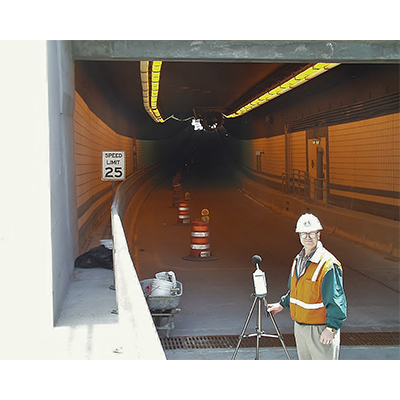Casella UK
Wolseley Rd, Kempston,Bedford MK42 7JY
+44(0)1234844100
info@casellasolutions.com

With officially more mobile phones in the world than people, it is clear to see the advancements that technology has made over the past 20 years, integrating into our everyday lives and in many ways becoming a replacement for human intuition.
A report in Forbes magazine suggested that app downloads are expected to reach 268,692 billion by 2017, based on data collected from the Apple app store alone. Whilst this new technology has brought many benefits, we are all aware of the potential negative impact it may have on natural human intellect and on using our own instincts. How can we, as monitors of public environments and workforces, embrace the benefits of technology without losing our core skills, expertise and experience?
Like any other industry, environmental health and safety has felt the positive effect of the push toward technology and the advancement of monitoring is a big part of this. Occupational hygienists, noise consultants and engineers alike are using new technology in their everyday roles, monitoring dust and noise levels for individual workers and in the wider environment.
Erich Thalheimer, a Principal Acoustical Engineer with WSP|Parsons Brinckerhoff, frequently used Casella’s CEL 593 noise and vibration monitoring device when he managed the noise control program during peak construction years (1996 – 2005) for the biggest urban infrastructure and transportation project in US history; the I-93 Central Artery/I-90 Tunnel Project, more popularly known as the ‘Big Dig’ in Boston.
The project alleviated an extensive traffic problem that had plagued the city for half a century, saving Boston’s road users an estimated $500 million dollars in elevated accident rates, fuel consumption and late delivery charges by the time of its completion in 2007. The project also reunited Boston’s neighbourhoods with the waterfront, built new bridges and public parks, and paved the way for the city’s growth well into the 21st century. During this time, Erich oversaw contractor compliance, performed specialised noise/vibration studies, developed innovated noise control solutions, and ensured the project's EIS noise commitments were fulfilled.
At the heart of Erich’s work was the confidence of knowing that he could trust his CEL 593 as a reliable, highly accurate yet simple to use device to accompany his wider research into construction- and traffic-induced noise and vibration experienced by people living close to the Big Dig. The simplicity of the CEL 593 and Erich’s expertise combined to offer viable and effective solutions to the problem, with a subsequent drop in the number of complaints received. Erich still uses the same device to this day; some 20 years after he initially purchased it back in 1996.
Monitoring for noise, dust and vibration still requires an equal amount of human intuition in order to assess many vital aspects including the likely causes, the people impacted and the steps that need to be taken to improve the situation. As Erich states, “The best acoustic analyser in the world is the one between our ears!”
When monitoring is taking place, you should always take into account other environmental factors prevalent on the day. For example, results taken during the summer will be affected by open windows and skylights, creating a breeze that could distribute dust particles within the area being tested. If the same test were to be conducted in the winter with windows closed, the dust would remain on surfaces making it more apparent. This simple change in season could cause an issue to go unnoticed. The most successful results can be achieved when there is a combination of human intuition, experience, and the objectivity of the equipment.
When asked about the use of technology for the monitoring of health and safety, Erich said: “With the progress of technology, the job of an acoustical engineer has become easier. Where would we be without GPS and Google Earth? But somewhere along the way, these developments have caused us to lose sight of acoustic reality. People are now relying too much on their instruments.”
It is clear that despite the growth in technology, its undoubtable benefits and its seamless simplicity, a true understanding and appreciation of acoustics is best achieved with collaboration between technology and people. By reaching this happy medium we can learn to see technology as an extension of our own capabilities, not a replacement.